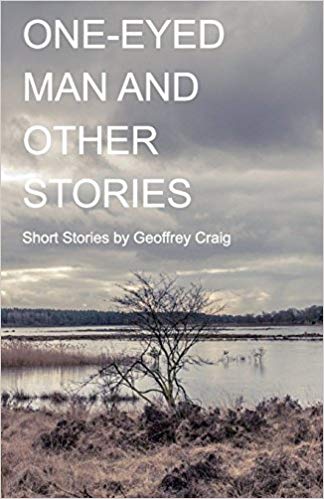|
Lois Greene Stone, writer and poet, has been syndicated worldwide. Poetry and personal essays have been included in hard & softcover book anthologies. Collections of her personal items/ photos/ memorabilia are in major museums including twelve different divisions of The Smithsonian. The Smithsonian selected her photo to represent all teens from a specific decade. Life as it’s happening.........
Expectation of moments in tangible form were always present when a roll of film was dropped off to be developed. It often seemed as if too much time had elapsed from first to completion of thirty-six pictures. Sometimes I’d actually just take a snapshot of ‘anything’ to finish; then the photo shop could turn out items my hands could feel, eyes could note blurry-or- okay-or perfect. Print film vanished and digital was too different for me, the granddaughter of a photographer who carried his cumbersome equipment and had a darkroom where swishes and odors filled the area that turned blank paper into permanent faces. How might I preserve a loved one’s life as it is happening without a shutter’s click? When my third grandchild was born, he was the first who lived in the same small town and I’d be able to watch grow up and not merely make a visit for an event, as happens with planned travel. My imaginary ‘shutter’ started with sleep-away summer camp; real mail. Yes, there were often the sentences about the rain, or a swim contest, disliking mandatory archery, enjoying paddling a canoe, but occasionally there were words with feelings of loneliness or delight. A discarded shoe box, without noticing handwriting and postage stamps, signalled time passing as envelopes stacked. Middle school is often the most disliked part of formal education. Even from a wooden cabin near a quiet lake, concerns for those classes came by post. I began to copy the boy’s words from his stationery to my computer and filed them; I also began to type my letters to him so I had a copy. Time. Place. The file was plumping up. By the time he began his university education, e-mail was a reality and I knew I was the holder of a life-as-it-is-happening, and that eventual gift to him would be one only I might do as our current society has few pages written in cursive of personal expression. Would a child born today even be able to read a yellowed hand-written note when postage was a penny on a postcard? Since I taught both high school English and Art, and later, when offspring grown, taught college English Composition, I was asked to clarify poetry, themes and plots of fiction, Shakespeare’s prose, confusion with philosophic readings. He did not know his words would be a chronology. I saved my sentences along with his, and each back-and-forth with dates in order had me notice how his language skills, perception, emotions had gone from boy to man. The Bachelor’s Degree had the flare common to all of them, and I sat and thought about the letter he’d sent when he began his sophomore year: ‘everyone looks so young to me’. That would possibly be a life-phrase now but kept quite secret from others. And I remembered the twenty-six page paper on Kant's principle of humanity written in his senior year of college and how enlarged his world had become since high school’s commencement. As I made certain the page-order was correct, I paused when I read what I’d sent Sept. 21, 2005 “Do NOT get discouraged in anything at school. Call me or Papa for help, or just to listen to you. Never-ever feel you disappoint anyone; you have only to continue to learn as that will enrich your life. A grade is not the same thing as having learned something. I think you understand that; some people learn for a test, get a good grade, and promptly forget what they studied. I know that as a teacher. You remember, and can recall, and can use what you learn, and that is so impressive.” He was thirteen. Boy/Man. I printed the single-spaced pages, took them to a shop to be bound. This was not a gift for graduation, but a personal thank you for sharing and trusting me with his thoughts and feelings for so many years. And, for him?
0 Comments
Lois Greene Stone, writer and poet, has been syndicated worldwide. Poetry and personal essays have been included in hard & softcover book anthologies. Collections of her personal items/ photos/ memorabilia are in major museums including twelve different divisions of The Smithsonian. The Smithsonian selected her photo to represent all teens from a specific decade. Of L’Avenue and Charleston GardensHudson’s Bay Company. A heavy white wool blanket with a color stripe seemed to be a signature warming those beneath the cover. My exposed coil springs with a mattress on top, and solid red maple headboard/footboard, was only without it during summer months. Nothing was sturdier nor held in heat like that blanket. Even when ‘modern’ box springs replaced exposed metal coils, and a bed appeared more ‘finished’ with a sleeker look, the Canadian-made cover remained.
Since 2013, Hudson’s Bay has owned New York City’s Saks Fifth Avenue. It may own that store which opened in 1924 with facades of brick, limestone, and cast stone, but, for me, I ‘see’ my bed blanket. But stores, themselves, trigger memories. The escalator was modern with its metal separators, unlike the wooden clacking of Macy’s at Herald Square in New York. B. Altman department store fronted Fifth Avenue at 34th Street and had a restaurant where one could walk in alone, be seated with others, and an unwritten part of the experience was diners talked with one another during the brief meal as if the seaters were friends. The southern decor was transporting to an experience of mansions and quiet elegance. I didn’t know then, early 1950's, I’d actually spend a couple of years in Tennessee and find out about life behind those “Gone With the Wind” magical columns and grand landscapes. Often a table of books was the first thing I saw as I exited the Charleston Gardens. I opened many covers reading the dedications. I never ate at Lord and Taylor’s The Bird Cage; I had a pet canary during girlhood and my idea of a birdcage didn’t include a restaurant. One summer, during undergradschool, I worked at Simplicity Pattern Company. My lunch break was too brief to walk to Altman’s so it was a quick diner when I was fortunate to get a leather-covered, round, backless swivel-stool. Minus n available seat, I simply took out the brown bag containing a sandwich and soda and went back to my workplace. I was happy to be allowed to work for two months, and from my $30.50 a week take-home pay I always saved 50-cents for roses bought at a kiosk near the Long Island Railroad which was inside the grand Penn Station. Weekly, I carried flowers on the train, walking the several blocks from the depot to my house, and presented them to my mother. Oh how I thought I was so grown up and got the temporary job on my own; later I learned my dad knew people at that pattern company and that’s why I really was hired for such a brief time. In those years, sewing lines on patterns were actually drawn by hand; a bin of curved or straight sheets of plastic that had cut-outs to trace lines evenly spaced were held and a worker simply placed that correctly on a pattern, then pushed a pencil-like point through every line. I realized my co-workers would be doing this for their careers, while I was going on to grad school and whatever I chose. Opportunity, I learned, was not equal. Walking after work down to Penn Station, I’d pass Herald Square behind Macy’s, and enjoy the pigeons by the statues that ‘moved’ and rang bells signaling time. The motion fascinated me, and, being young, the pigeons didn’t seem dirty. In 1953, open-top double decker busses that ran from Jackson Heights in Queens to Fifth Avenue in Manhattan had ceased operations. I was glad I’d had a chance to experience going from Flushing Main Street’s bus garage to Jackson Heights only to be able to sit atop and have my hair blown by breeze enroute to the city. My mother always shook her head with disbelief as the Long Island Railroad was only 22 minutes, or I could take the Q-28 bus to Main Street and get the subway to 34th Street in Manhattan. Before air conditioning, what could be more adventurous than the upper deck of a bus that had no roof! But that vanished. Eventually so did many specific places from girlhood. And my father’s life, at age 45, vanished in 1954. My commute to Teachers College, Columbia University, for grad school was at night. Alone at 116th Street’s subway platform, I wondered if I’d catch the 11pm Port Washington Long Island Railroad train or if I’d have to take the subway to Flushing, then a bus, then the walk knowing my widow-mother would be waiting up until she heard my key in the latch. Why hadn’t I thought to find out that grad school classes were at night! Thoughts were still more at the concept of death being real and not abstract. No one sold flowers at that hour, nor, I guess, would I have indulged in the expense as my course load was by the credit and expensive for my mother. I was mindful of that although she continued to figure out how to provide for her three daughters and we didn’t see the juggling that enabled it. Charleston Gardens. After marrying a med student who was attending a university in Tennessee, I left New York. The south looked, in places, like the restaurant’s murals, but it was distressing coming from a northern upbringing to see segregation and I hadn’t realized until my first county-wide teachers’ conference that I was teaching high school at an all-white building. I was to sit in the front of a bus. I was to use a public drinking fountain only for whites. This was not the romanticized B. Altman view I’d so loved. This, as death, and stores closing, and busses with open tops disappearing, Trolley’s removed from Flushing Main Street, and eventually Penn Station becoming Madison Square Garden instead of elegant, was more beginnings of ‘real life’. I read in WSJ, The Wall Street Journal’s Magazine, that was delivered January 19, 2019, that Saks Fifth Avenue will open a restaurant. (Pg. 107, by Joshua Levine) I live 400 miles away so won’t see it, nor did I experience its installation of escalators years ago. Even my girlhood skyline has been altered and I’d heard one cannot even peek in and look at the Rainbow Room restaurant in Rockefeller Center because of security; I’d asked a grandchild to snap a picture during a visit to NY but she was turned away. But I liked the Journal’s triggering memories for me, and imagine even with a Paris-theme that some people eating at Saks may have an experience that stays inside in a special place.  Silvy Wells has always wanted to write. She discovered her passion for being a writer when she was at the age of fourteen when started to write a novel in her native language, but she has never finished it. After that, Silvy has always written something a poem or a short story. She has published some of her poems in several editions along with different authors. After obtaining a degree in the Department of Classics, Ancient Greek, and Latin, Silvy became a Latin language teacher and still teaches students in one small town in the Republic of Macedonia. But there has always been that big desire for writing which she has minimized with reading books and writing reviews on her blog Books Are My Life. Title: Madam Love, Actually |


 RSS Feed
RSS Feed